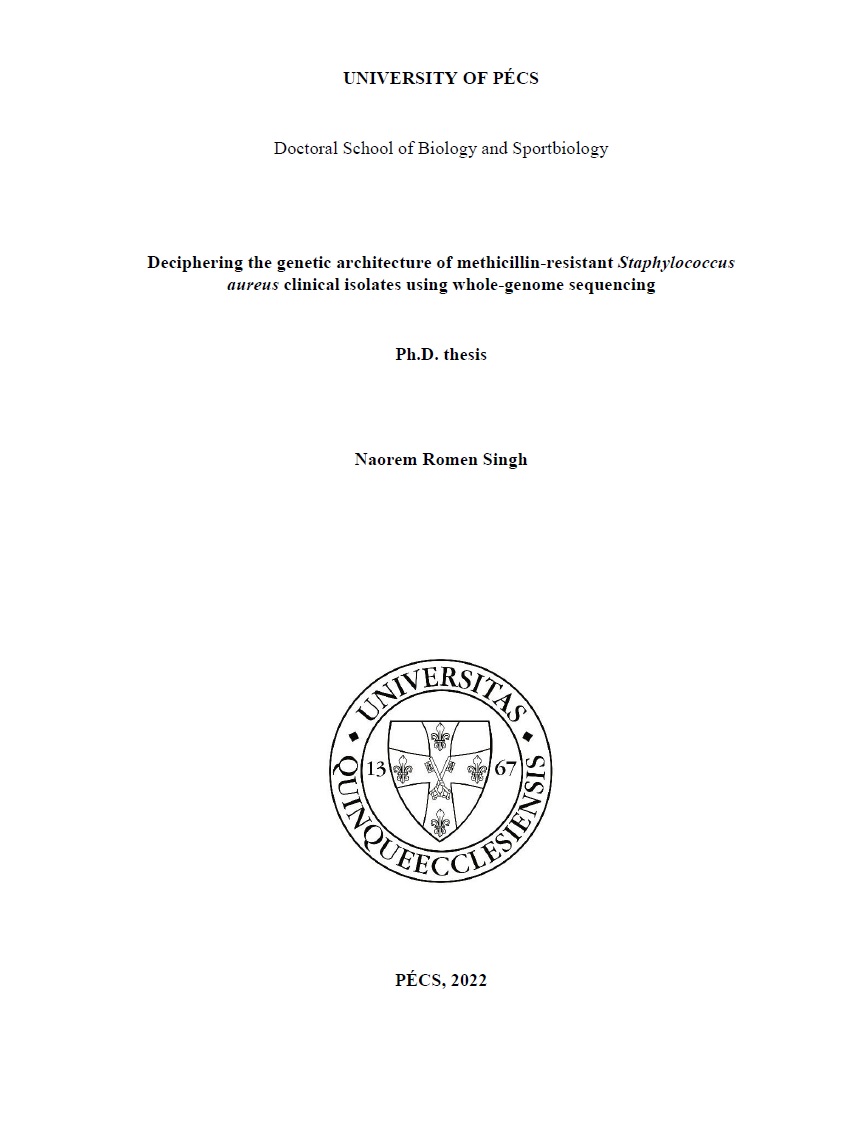Deciphering the genetic architecture of methicillin-resistant Staphylococcus aureus clinical isolates using whole-genome sequencing
Abstract
Staphylococcus aureus is a major human and animal pathogen, leading to cause skin
and soft tissue infections to life-threatening infections (Tenover et al., 2019). S. aureus
acquires an arsenal of antibiotic resistance genes (ARGs) and virulence factorsencoding genes (VFGs) via horizontal gene transfer (HGT) and recombination. This
HGT event enabled the emergence of hypervirulent and multi-drug resistant (MDR)
strains and led to challenging issues in antibiotic therapy (Chan et al., 2011).
Consequently, the morbidity and mortality rates caused by S. aureus infections have a
substantial impact on health concerns. Thus, the prevention and control of MDR S.
aureus infections have become the main concern in the public health sectors of the
European countries (Köck et al., 2010). This strongly suggests that there is a
continuous need to search for additional drug or vaccine targets in their genomes that
would improve protection and long-lasting prevention (Perumal et al., 2007).
The polyphasic characterization of S. aureus is essential for delineating the
occurrence of an epidemic and monitoring the transmission of the organism (Du et al.,
2011). In this modern era, the whole-genome sequencing technology has brought with
it the possibility of investigating pathogen outbreaks, defining the different lineages,
and identifying the prophages among the S. aureus strains and their diversity (Köser
et al., 2012). Further, this technology provides an excellent opportunity to accelerate
the discovery process of drug target, or vaccine candidate proteins through subtractive
genome-based and reverse vaccinology (RV) approaches (Rappuoli, 2000). These
approaches enable the prediction of drug and vaccine target proteins for the pathogens
that are challenging to culture in the laboratory.
The number of comprehensive studies addressing S. aureus infections by
concurrently exploring the epidemiology, and genome comparison are currently low,
thus limiting global surveillance and epidemiological monitoring. This study is to
understand the molecular basis of drug resistance, pathogenesis, niche-specific
difference, evolutionary relationship of S. aureus clinical strains, prophages diversity,
and identification of potential drug target and vaccine candidate proteins of S. aureus
strains. This knowledge would allow the extrapolation of basic principles to improve
diagnosis, infection control, and treatment strategies of staphylococcal disease.

